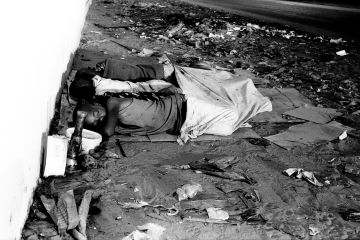An increasingly urban world
- In 1950, only 30% of the world population lived in cities
- Since 2008, more than 50% of the world population lives in cities
- In 2030, about 70% of the world population will live cities
The emerging phenomenon of the Megapolis: a boundless city
Urban planning, land use and city organization are at the heart of national and international debates. The development of large megalopolis, which public authorities cannot manage, results in an anarchic organization of space ; this is how, coupled with the housing crisis, extremely precarious suburbs develop around cities but also how the city is invested in a disorderly way: urban interstices are occupied and used in often surprising ways.
However, while the city attracts people through social and economic incentives, it individualizes them. By destroying the framework of community and family relations, isolating individuals and cutting them off from resource networks, it contributes in the collapse of traditional societies.
« In the city, each is a stranger to the other. » Xavier Emmanuelli
Thus, cities participate in weakening emigrated populations that are often severed from both financial, economic, social and emotional resources, and weakens even more those already in precarious or vulnerable situations.
Exclusion as dispossession
In the most advanced countries as well as in least developed ones, while extreme exclusion may be linked to poverty, precarity and a difficult access to material resources, it is nevertheless a notion far more complex: it is the ultimate stage of a long process of deprivation, disaffiliation and multiple dispossessions.
The exclusion process varies depending on who is affected. It can gradually lead to the loss of economic, societal and family ties, to the loss of the sense of space and time, the representation of the body, usually intensified by substance abuse (alcohol, drugs etc…) and eventually to the loss of self-esteem. It is in this sense that exclusion can be conceived as dispossession.
In addition the singularity of each journey, samusocial structures worldwide note an extensive diversification of the homeless population, with the influx of young migrants – who, initially, have real motivation and abilities to escape this process- but also of street children who become young adults, families and particularly single-parent families. The process of disaffiliation is inevitable in the streets, and that is why it is dangerous for individuals.
“It is not irreversible. SamuSocial takes action against this phenomenon.” Xavier Emmanuelli
Street Children and youth: a growing phenomenon.

From Algiers to Ouagadougou, an increasing number of children and youth survive in the streets.
In every society, the family unit constitutes the sociocultural, judicial and political reference framework that grants child protection, development and fulfillment. However, left to their own devices, street children and youth find themselves completely disconnected from family protection and are exposed de facto to high-risk behavior that endangers their health and their lives. They are excluded from health services and are vulnerable to risks of physical violence and psychopathological risks. The development of support systems for these children and young people is the most important mission of samusocialInternational because “it is an international emergency and the plight of children is intolerable”.
